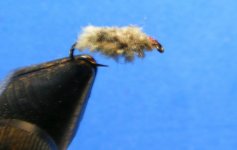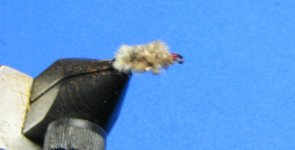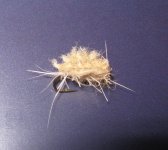MKern
Active member
- Joined
- Sep 11, 2006
- Messages
- 3,822
I do use a lot of ostrich, but I think it folds flat once wet. You will definately have to rib it to keep the flat appearance of a cress bug.
I like the match stick lead and I have also wrapped lead and pinched/squashed it flat with pliers.
I like the match stick lead and I have also wrapped lead and pinched/squashed it flat with pliers.







